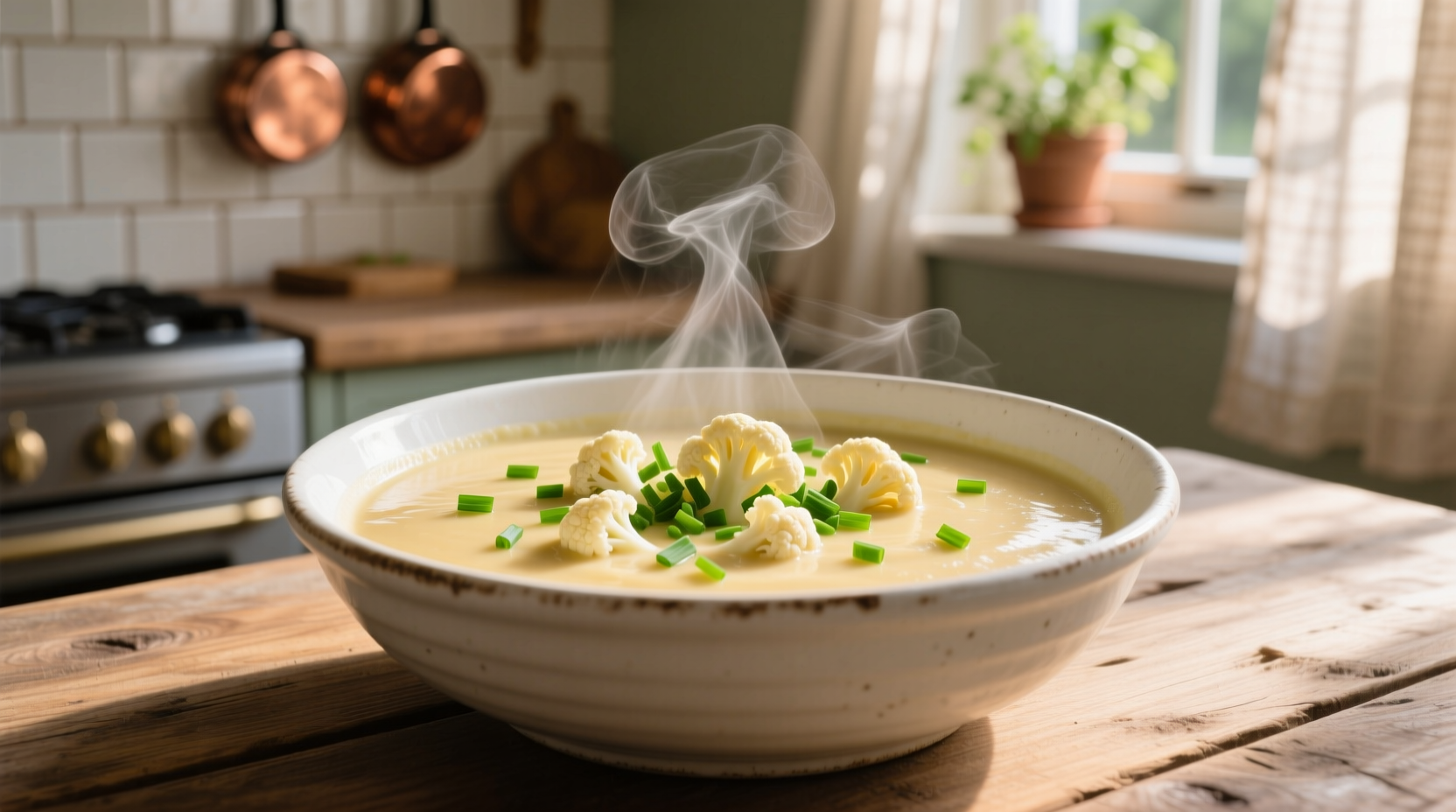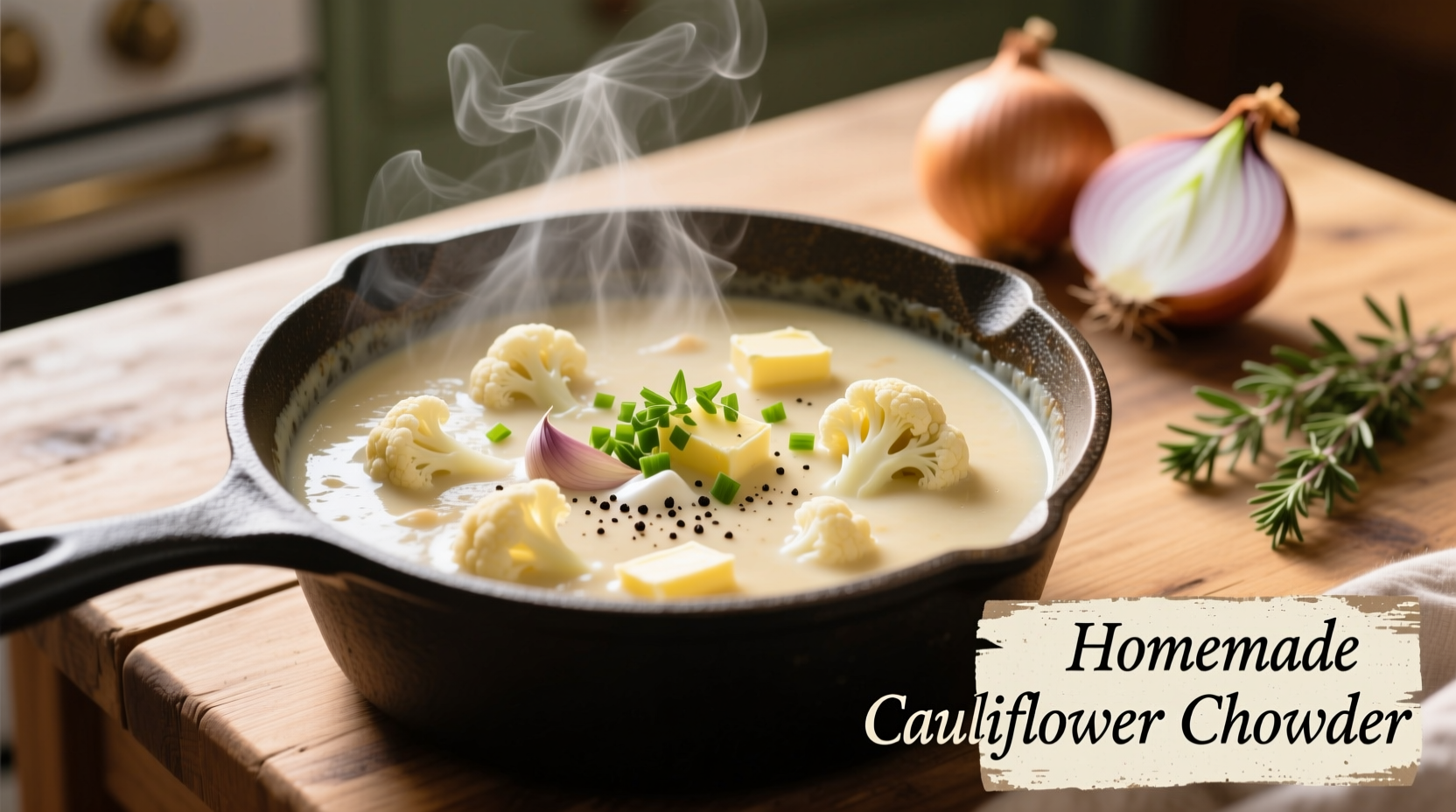Nothing beats a warm bowl of creamy cauliflower chowder on a chilly evening. Unlike traditional chowders that rely on heavy cream and potatoes, this modern version uses cauliflower's natural starches to create luxurious texture without dairy. The result? A velvety soup that's both nutritious and deeply satisfying, ready in just 40 minutes with pantry staples.
The Evolution of Chowder: From Fisherman's Stew to Vegetable Classic
Chowder's journey began as a hearty fisherman's stew along the Atlantic coast in the 18th century. Originally made with salted pork, fish, and ship biscuits, the dish evolved as ingredients changed with location and season. Vegetable chowders gained popularity in the 1970s as health consciousness rose, with cauliflower emerging as a star ingredient in the 2010s due to its neutral flavor and creamy texture when cooked properly.
| Chowder Type | Preparation Time | Calories (per serving) | Creaminess Source |
|---|---|---|---|
| Traditional Potato Chowder | 55 minutes | 320 | Heavy cream + butter |
| Cauliflower Chowder | 40 minutes | 225 | Cauliflower's natural starches |
Why Cauliflower Makes the Perfect Chowder Base
Cauliflower's unique composition creates magic in soup preparation. When cooked and blended, its natural pectin and starches emulsify to create a velvety texture that mimics dairy without added fat. According to USDA FoodData Central, one cup of cauliflower contains just 25 calories but delivers 77% of your daily vitamin C needs and 20% of vitamin K. This nutritional profile makes it ideal for creating satisfying meals that support healthy eating patterns without sacrificing comfort.
Essential Ingredients for Flavorful Results
The foundation of exceptional cauliflower chowder lies in ingredient quality and proper ratios. Here's what you'll need for a perfect base recipe serving four:
- 1 large head cauliflower (about 2 lbs), cut into florets
- 4 slices thick-cut bacon, chopped (or 2 tbsp olive oil for vegetarian version)
- 1 large yellow onion, finely diced
- 2 celery stalks, minced
- 3 garlic cloves, minced
- 4 cups low-sodium vegetable broth
- 1 tsp fresh thyme leaves
- 1 bay leaf
- ½ cup unsweetened almond milk (or whole milk)
- Salt and freshly ground black pepper to taste

Step-by-Step Cooking Process
Follow these professional techniques to achieve restaurant-quality results:
- Sauté aromatics properly: Cook bacon until crisp, then remove, leaving 1 tbsp fat. Sauté onions and celery over medium heat for 8-10 minutes until translucent but not browned. Add garlic during the last minute.
- Steam cauliflower correctly: Add cauliflower florets, broth, thyme, and bay leaf. Bring to simmer, cover, and cook 15-18 minutes until fork-tender. Crucial step: Do not boil vigorously, which creates wateriness.
- Blend to perfection: Remove bay leaf. Using an immersion blender, puree until smooth. For standard blenders, cool slightly and blend in batches.
- Finish with dairy alternative: Stir in almond milk and reserved bacon. Heat gently without boiling. Season with salt and pepper.
Pro Tips for Texture and Flavor Mastery
Avoid these common pitfalls that ruin otherwise good chowder:
- Over-blending: Creates a gluey texture. Blend just until smooth, not liquefied.
- Incorrect seasoning timing: Add salt after blending, as concentration changes during pureeing.
- Boiling after adding dairy: Causes separation. Keep temperature below simmer point.
- Skipping the bloom step: Toast spices in fat before adding liquids to maximize flavor extraction.
Delicious Variations to Explore
Once you've mastered the base recipe, try these chef-approved variations:
- Smoky Chipotle Version: Add 1-2 minced chipotle peppers in adobo sauce and ½ tsp smoked paprika
- Seafood Fusion: Stir in 8 oz cooked shrimp or flaked salmon during final heating
- Roasted Garlic Upgrade: Replace raw garlic with 1 whole roasted garlic bulb for deeper flavor
- Curried Cauliflower Chowder: Add 1 tbsp curry powder and top with toasted coconut flakes
Serving and Storage Guidelines
For optimal enjoyment, serve immediately in pre-warmed bowls. The chowder thickens as it cools, so you may need to add a splash of broth when reheating. Leftovers keep well in airtight containers for 3-4 days in the refrigerator. For longer storage, freeze in portion-sized containers for up to 3 months. When reheating frozen chowder, thaw overnight in the refrigerator first, then warm gently over medium-low heat, stirring frequently.
When Cauliflower Chowder Isn't the Best Choice
While versatile, cauliflower chowder has specific limitations. It's not ideal when you need a clear broth base for seafood presentations, when serving guests with cruciferous vegetable sensitivities, or when preparing for very young children who prefer milder flavors. In these cases, traditional potato or corn chowder might better meet your needs. Understanding these context boundaries helps you select the right dish for each occasion.











 浙公网安备
33010002000092号
浙公网安备
33010002000092号 浙B2-20120091-4
浙B2-20120091-4